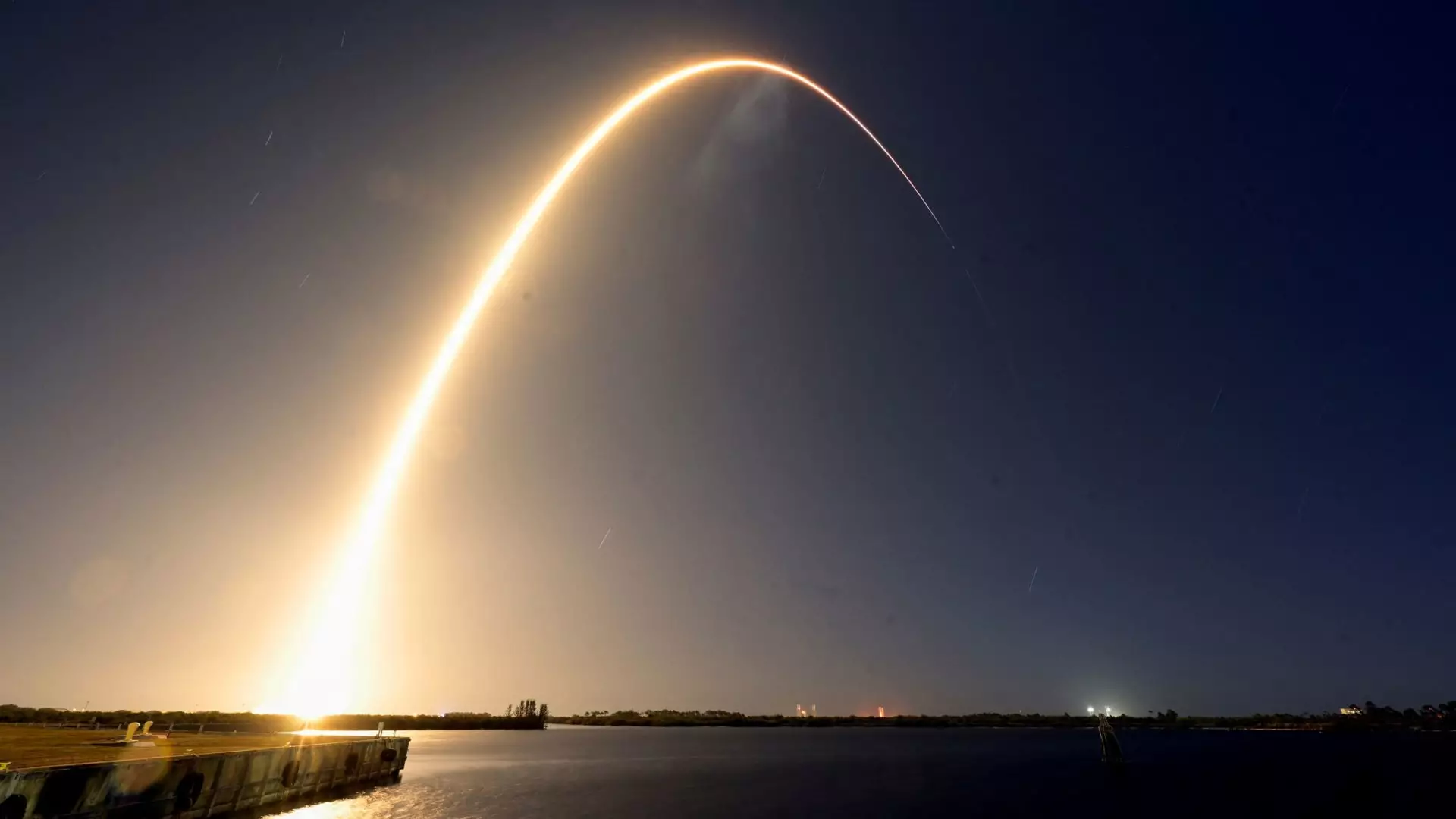In the dynamic landscape of space exploration, the quest for sustainable lunar activities is gaining momentum, with Texas-based Firefly Aerospace taking a bold step forward. Their cargo lander, “Blue Ghost,” recently launched aboard SpaceX’s Falcon 9 rocket, embarking on a meticulous 45-day journey to our celestial neighbor, the Moon. This mission marks Firefly’s entry into the competitive arena of lunar services, a sector fostered by NASA’s vision for returning humans to the Moon. By venturing into this intricate domain, Firefly aims to not only establish its presence but also contribute significantly to the ongoing narrative of space exploration.
On an early Wednesday morning, the Blue Ghost mission took to the skies, signifying a crucial milestone for Firefly Aerospace. The company’s CEO, Jason Kim, expressed a commitment to executing their planned operations, which encompass everything from achieving orbital stability to executing a soft landing on the lunar surface. This mission doesn’t just represent a technological endeavor; it symbolizes a broader ambition to facilitate humanity’s sustainable return to the Moon, a campaign that integrates various public and private collaborations—especially vital as NASA pushes forward with its Artemis program.
Blue Ghost, named after a rare American firefly species, stands nearly seven feet tall and carries a notable payload: ten government and commercial projects facilitated by a $101 million contract with NASA. This initiative is part of the Commercial Lunar Payload Services (CLPS) program, intended to streamline delivery of scientific instruments and cargo to the Moon. The shift towards commercial partnerships underscores the evolution of space exploration, emphasizing a collaborative model that invites innovation from both established and emerging players in the field.
However, Firefly’s journey is not without its challenges. CLPS has already been marked by trials and tribulations, with two other competitors—Astrobotic and Intuitive Machines—having launched their lunar missions last year. While one of Astrobotic’s attempts faltered, Intuitive Machines faced a rocky but ultimately survivable landing. These competitive dynamics showcase the high stakes associated with lunar exploration and the unpredictable nature of space missions.
With Firefly outlining 17 distinct objectives for the Blue Ghost mission, effective execution is paramount. To date, the company has celebrated five successful milestones, emphasizing the thoroughness of their operational planning. The impending landing, targeting the Mare Crisium basin on the Moon’s near side, is anticipated on March 2. Achieving a soft landing would not only serve as a testament to Firefly’s engineering capabilities but would also enhance NASA’s strategy for repeat lunar engagements.
Firefly’s venture into aerospace is particularly significant as it aims to function optimally through an entire lunar day, roughly equivalent to 14 Earth days, while also attempting to extend operational hours into the lunar night. This dual-phase functionality heralds a new paradigm for space missions, emphasizing the importance of adaptability and reliability in harsh extraterrestrial environments.
Moreover, it is worth noting that during the same launch window, SpaceX carried multiple lunar landers, including ispace’s second moon mission, which follows a previous crash landing. Such cooperative launches illustrate an evolving market fueled by shared ambitions and mutual dependencies among space firms.
Looking ahead, Firefly Aerospace’s Blue Ghost mission is only a part of the broader tapestry of lunar exploration. With NASA anticipating up to five U.S. companies executing lunar missions in 2025, the landscape is rapidly transforming. Each successful endeavor brings humanity closer to establishing a permanent presence on the Moon, and retrieves the exploratory spirit that has driven centuries of discovery.
As we witness this new wave of lunar ambition, it is clear that companies like Firefly Aerospace are not just competitors but vital collaborators in humanity’s quest to unlock the mysteries of the Moon and beyond. The upcoming years promise to be a thrilling chapter in space exploration, filled with challenges, discoveries, and advancements that will shape our understanding of the cosmos.

